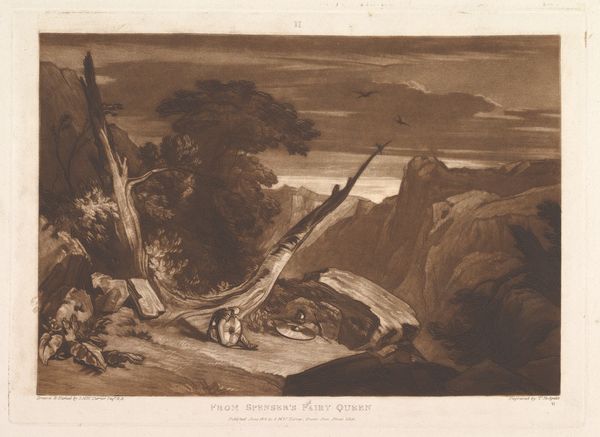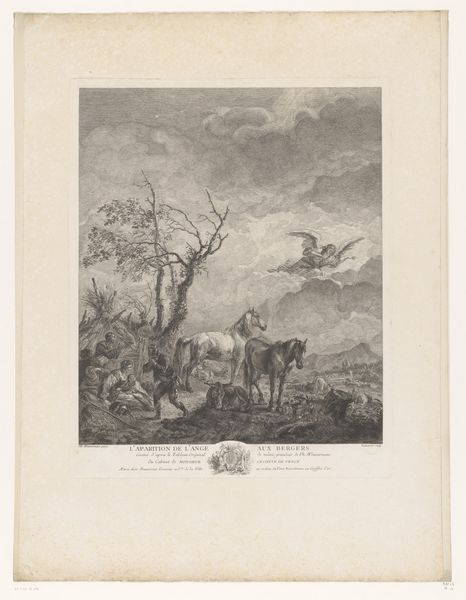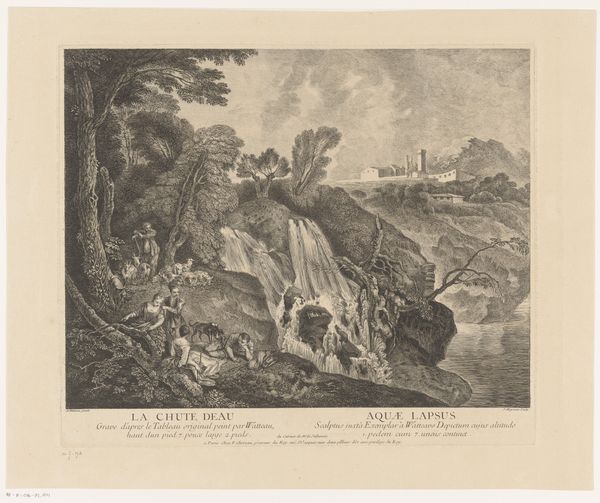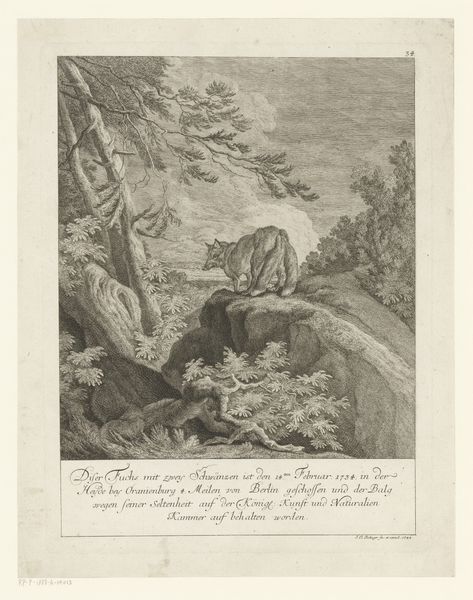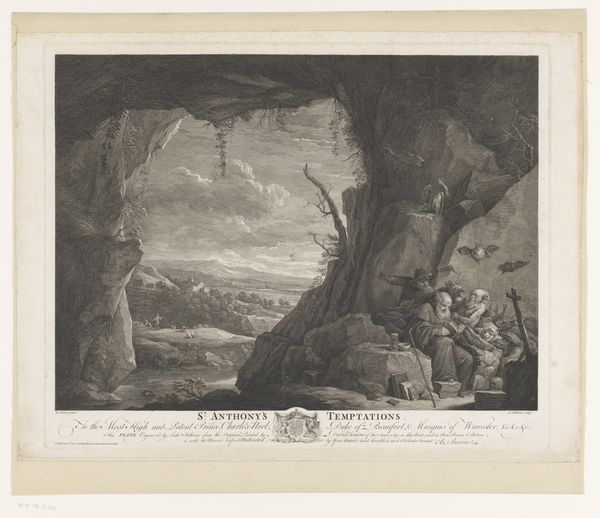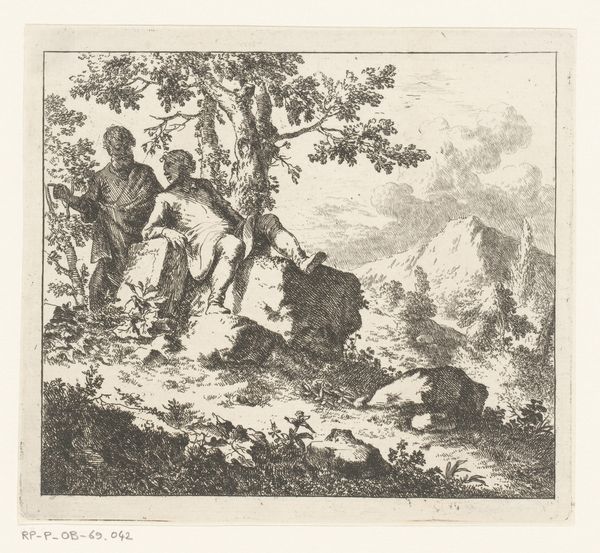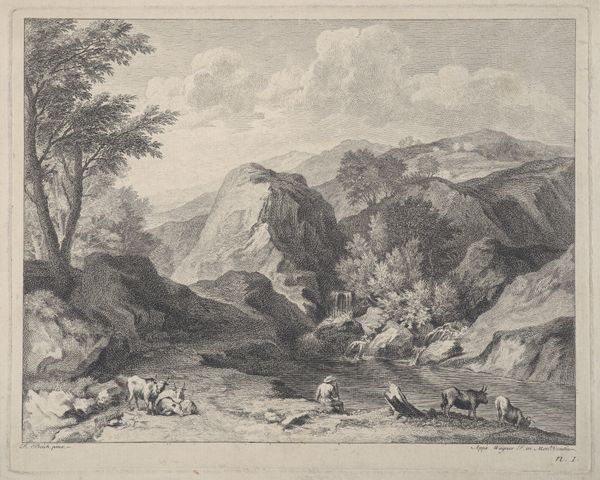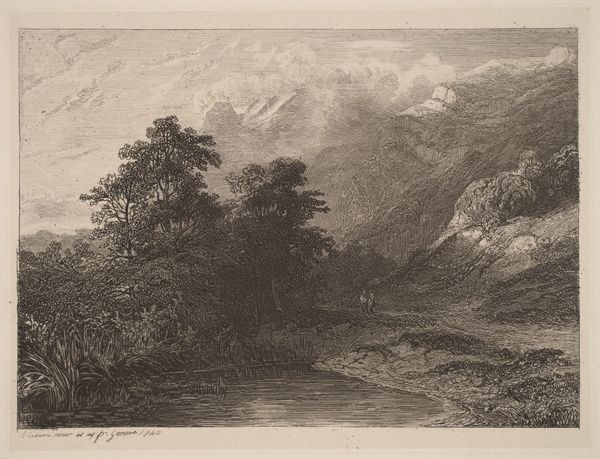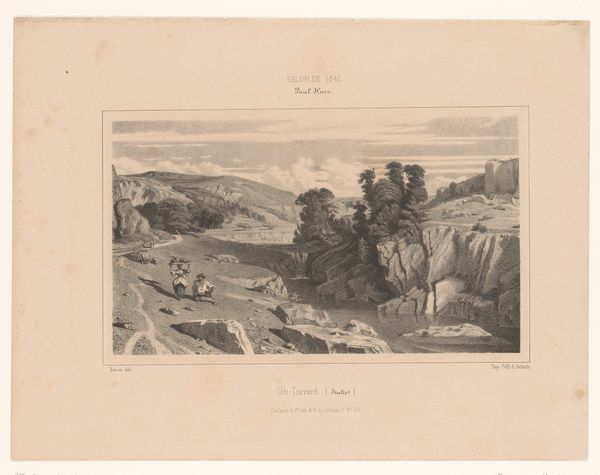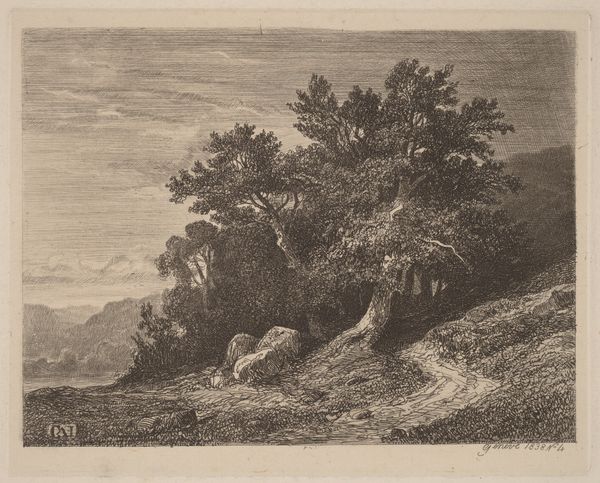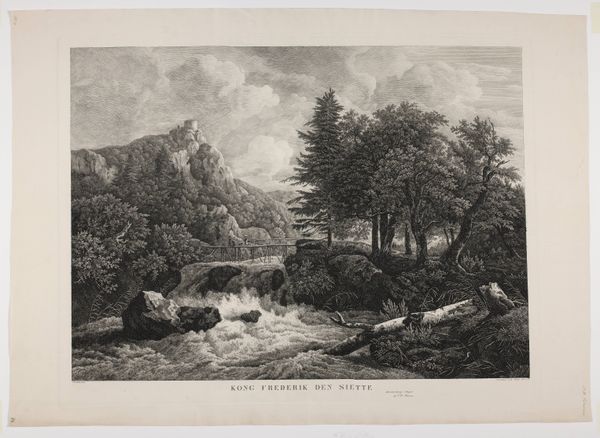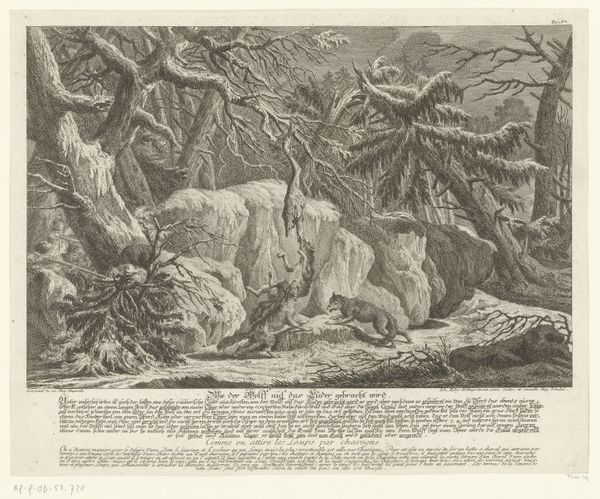
lithograph, print
#
lithograph
# print
#
landscape
#
figuration
#
romanticism
#
line
#
history-painting
Dimensions: 415 mm (height) x 540 mm (width) (bladmaal)
Curator: This print by Wilhelm Heuer, titled *Une scène du passage du mont St. Bernard*, dates from between 1821 and 1825, and it's rendered with lithographic precision. Editor: It immediately strikes me as incredibly bleak. The swirling winds and snow-laden landscape give a strong impression of isolation and hardship, as if the figures are completely at the mercy of nature’s overwhelming power. Curator: Indeed. It reflects a fascination with the Romantic sublime – the insignificance of man against the grandeur of nature. We see this interest play out quite frequently in the early 19th century with depictions of historical moments intertwined with extreme environments. It plays on the social role of conflict during the period following the Napoleonic era, specifically the politics of this imagery with dramatic mountain settings. Editor: Yes, it almost feels staged to some extent, even with the harsh weather elements. Who are the figures we see depicted here? I'm curious to think about it in terms of human experience rather than pure history. Curator: Well, this is meant to represent a scene from the crossing of the Great St. Bernard Pass, a crucial route through the Alps. Note how Heuer captures Napoleon’s troops, specifically. The dramatic conditions underscore their ambition and the immense challenges they overcame in battle. Editor: That adds a layer of complexity. Knowing this is a military scene forces me to reconsider. The romantic portrayal seems almost celebratory. However, these men would have also represented invasion and potential oppression to the communities they were encountering. The "grandeur" for some comes at the cost of suffering for others. Curator: Exactly. Romanticism was often employed to fuel nationalistic sentiment and glorify the military. How a society interprets history greatly affects how the image will be internalized in culture and traditions. Editor: So much shifts when we acknowledge the socio-political machine churning behind supposedly neutral art. It becomes not just a pretty picture, but a visual argument in a power struggle. I see the scene differently now. Curator: Precisely the role of art within political history. By examining pieces like Heuer’s print through the lens of its creation and the political machine for which the content would have been most useful, we are given the chance to think critically. Editor: Thank you for enriching my view, bridging aesthetic impression with historical context, helping me to rethink the scene and its actors from an analytical perspective.
Comments
No comments
Be the first to comment and join the conversation on the ultimate creative platform.
